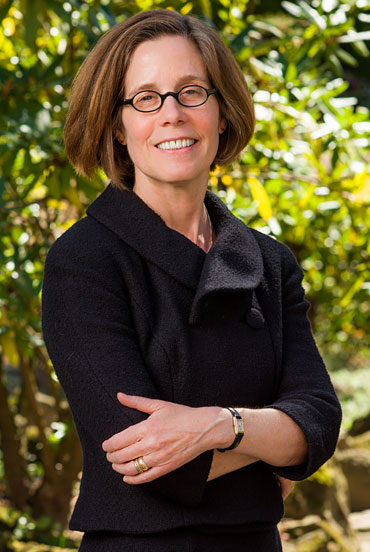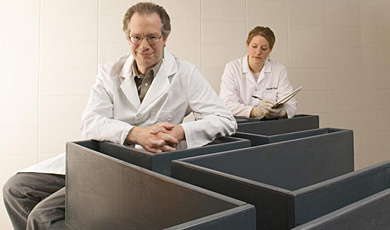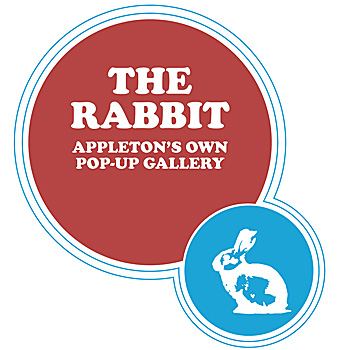Lawrence University President Mark Burstein has announced the appointment of Catherine Gunther Kodat as provost and dean of the faculty. She also will join the Lawrence English department as a tenured professor.

A scholar of 20th-century English literature and American studies, author and former newspaper reporter, Kodat is currently the dean of the College of Arts & Sciences and professor of English at Lewis & Clark College in Portland, Ore. Kodat will officially join the Lawrence administration on July 1, 2017.
Kodat will succeed David Burrows, who announced in March he will return to the faculty at the end of the 2016-17 academic year. Burrows joined the administration in 2005 and will remain with the university, teaching in Lawrence’s psychology department and leading efforts to enhance pedagogy.
As Lawrence’s chief academic officer, Kodat will share responsibilities for long-range financial planning, enhancing the campus’ intellectual climate, recruiting, retaining and supporting faculty, strengthening instruction and research, fostering curricular innovation and promoting campus inclusivity.
In announcing her appointment, Burstein called Kodat’s academic background, accomplishments and interests “a perfect fit” for Lawrence.
“Katie’s interest in Lawrence drew early attention from the search committee and our interactions with her only increased our desire to have her join us,” said Burstein. “From the beginning, it was clearly a difficult task to find someone who had the temperament, experience and love of the liberal arts to carry forward the very successful tenure of Dave Burrrows. I think we have found such a person in Katie.”
Kodat joined the Lewis & Clark administration from the University of the Arts, a visual and performing arts institution in Philadelphia, where she served as acting provost and dean of the school of arts and sciences.
Prior to Lewis & Clark, Kodat spent 17 years at Hamilton College in Clinton, N.Y., where she rose from assistant to full professor, chaired the English and creative writing department and served as director of the American studies program. She was recognized with Hamilton’s Excellence in Teaching Award in 2008. She also has taught at Boston University, Boston College and Tufts University.
“Katie brings so much to the table: a deep appreciation and love of the arts, a strong commitment to scholarship and teaching, and tremendous warmth and humor.”
— Tim Spurgin, chair of the search committee
She is the author of the 2015 book “Don’t Act, Just Dance: The Metapolitics of Cold War Culture” and more than two dozen published scholarly articles, book chapters and reviews.
Before beginning her academic career, Kodat was a metro reporter and dance critic for the Baltimore Sun in the 1980s.
Kodat said the job description was one of the things that first attracted her to Lawrence.
“The posting said Lawrence was looking for ‘a leader with a strong vision and a humane, personal touch,’” said Kodat. “Most of these job descriptions sound a lot like one another, but that line was unique. It caught my attention and told me something about Lawrence that certainly was consistent with my view of the world.”
“The prospect of joining an intellectual community where music plays such a central role, both academically and in the everyday life of the campus, is tremendously exciting to me,” Kodat added.
She began her undergraduate career as a piano performance major at the Peabody Institute before earning a bachelor’s degree summa cum laude in English at the University of Baltimore. She earned a master’s and doctorate degree in English from Boston University.
“Katie brings so much to the table: a deep appreciation and love of the arts, a strong commitment to scholarship and teaching, and tremendous warmth and humor,” said Tim Spurgin, Bonnie Glidden Buchanan Professor of English Literature and associate professor of English, who chaired the search committee. “She has held senior leadership positions at two distinguished institutions, working on everything from budgets to curricular review and reform. All of this, combined with her early experience as a reporter for the Baltimore Sun, will serve as excellent preparation for her work here.”
Kodat’s husband, Alexander, is a senior product architect and software engineer at Rocket Software. They are the parents of triplets: Axel, a 2015 graduate of Swarthmore College; Dexter, a 2015 graduate of Occidental College; and Madeleine, a senior at the School of the Art Institute of Chicago.
About Lawrence University
Founded in 1847, Lawrence University uniquely integrates a college of liberal arts and sciences with a nationally recognized conservatory of music, both devoted exclusively to undergraduate education. It was selected for inclusion in the book “Colleges That Change Lives: 40 Schools That Will Change the Way You Think About College.” Engaged learning, the development of multiple interests and community outreach are central to the Lawrence experience. Lawrence draws its 1,500 students from nearly every state and more than 50 countries.

